Download rules for Wiz-War - Fantasy Flight Games
Transcript
Introduction ComponentOverview This section describes the Wiz-War components in detail. Callista stands amidst a labyrinth of crackling, mystic energy, gazing at her opponents in the distance. Yesterday, they were merely academic rivals. But today, they are deadly enemies. The winner of today’s duel becomes Guildmaster of the Arcane Order, with untold power at his fingertips. The losers are banished from the guild forever if they are not killed first. Unwavering, Callista incants her first spell – transforming herself into a swift and savage werewolf – and lopes off into the labyrinth. Let the Wiz-War begin! Sector Boards These sector boards are used to build the game board. Each sector board shows a map on each side: one with a classic layout from the original version of the game, and one with a new layout created for this edition. Overview Plastic Wizard Figures and Colored Bases Wiz-War is a game of magical combat in an underground stone labyrinth for two to four players. Each player takes on the role of a wizard attempting to kill his enemies and steal their valuable treasure. The plastic wizard figures represent the players’ wizards during the game and are placed on the colored bases to indicate which player controls which wizard. Each wizard figure has a unique appearance, but it does not affect gameplay. Object of the Game The first player to score 2 victory points wins the game. A player scores 1 victory point each time he kills an enemy wizard and 1 victory point each time he brings an enemy treasure to his own base. Alternatively, if only one player’s wizard is left alive, he wins the game. Plastic Transformed Wizard Figures Component List The transformed wizard figures represent wizards who have changed into a different physical form. This section lists the physical components of Wiz-War. • This Rulebook • 4 Sector Boards Life Trackers • 4 Plastic Wizard Figures • 4 Plastic Wizard Bases (1 in each player color) The life trackers correspond to the player colors and indicate a wizard’s current life total. A wizard’s life total starts the game at “15,” and a wizard dies if his life total is reduced to “0” or less (indicated by the skull on the dial). • 5 Plastic Transformed Wizard Figures • 4 Life Dials (1 in each player color; each with 1 faceplate, 1 dial, and 1 plastic connector) • 1 Random Direction Overlay • 137 Cardboard Pieces, including: »» 45 Object Markers Random Direction Overlay »» 4 Portal Markers »» 8 Treasure Markers (2 in each player color) »» 20 Crack Tokens The random direction overlay is used in conjunction with the die to determine random directions. »» 26 Energy Tokens »» 24 Hat Tokens (6 in each player color) »» 10 Stun Tokens Treasure Markers • 168 Magic Cards (24 per school) These markers correspond to the player colors and represent the treasures that the wizards are trying to steal from each other. • 1 Four-sided Die • 4 Plastic Portal Stands 2 Object Markers Hat Tokens Portal Markers and Plastic Stands Stun Tokens These markers indicate objects that may appear in the labyrinth (usually through the use of spells), as well as possible changes to the labyrinth itself. Hat tokens correspond to the player colors and indicate which wizard is being affected by a particular spell. They are also used to indicate which wizard is maintaining an object when there are multiple copies in the labyrinth. Portal markers indicate squares on the edges of the labyrinth that are connected to each other when it is not obvious that they are. Place each portal marker on a plastic stand. Stun tokens indicate a wizard or creature who is stunned. Magic Cards Magic cards represent the different spells that a wizard can cast, items he can use, and energy he can utilize. Crack Tokens Crack tokens are used to track damage on walls, doors, and other objects that can be damaged in the labyrinth. Four-sided Die Energy Tokens The die included with Wiz-War has four sides and is numbered 1–4. It is used to determine random directions, damage, and other random game elements. When a card or rule specifies to roll a die, use this die. These tokens indicate how much energy a spell has when cast, typically in order to track its duration or remaining uses. Life Tracker Assembly SectorBoardBreakdown Assemble the life dials as shown in the diagram. 2 1 4 5 3 The Golden Rule 1. Door 2. Outer Wall 3. Home Base Square Many of the Magic cards in this game break the rules in a variety of ways. In case of a conflict, follow the text on that card. 3 6 4. Treasure Start Square 5. Column 6. Stone Wall Setup Schools of Magic 1. Choose Wizards and Colors: Each player chooses one plastic wizard and randomly chooses one player color, carefully placing the figure in the base of the player’s color. Each player then receives the sector board, life tracker, treasure markers, and hat tokens in his player color. A school of magic is a group of related spells. For instance, the Cosmetic school, although useless in the labyrinth (and therefore not included in this game), contains a variety of spells devoted to personal hygiene, hair, and skin care. Each school has its own unique feel and specialization, as listed below. 2. Build Game Board: All players collectively choose one side of the sector boards to play with, either new (side A) or classic (side B). Next, one player takes all the sector boards, making sure the side to be used this game is facedown. Since all Magic cards have a common back, players must separate them before playing the game. Sort them into piles according to the icon in the lower-left corner of the card. Cantrip: The cantrip school is a special school containing spells known by all wizards who enter the labyrinth. Wiz-War contains two divisions of the cantrip school, but only one of them, White Cantrip, is used in the standard game. The other, Black Cantrip, is only used when playing with the Custom Spellbook optional rule (see page 17). He shuffles the sector boards under the table, being sure to change their orientation as well, and then randomly builds the game board according to the number of players in the game (see “Variable Player Setup” on page 5.) Finally, he flips the sector boards faceup and places the portals next to the game board as shown in the diagram. Alchemy: The school of Alchemy specializes in creating items. In particular, magic stones are a primary feature of alchemy. These mystic gems bestow a variety of useful powers upon anyone carrying them. Dedicated alchemists should be wary of fire, since it can shatter all of their carefully-crafted gemstones. 3. Place Wizards and Treasures: Each player places his wizard figure in his home base square. Then, each player places one of his treasure markers on each of the two treasure start squares in his sector. 4. Prepare Magic Deck: One player takes all of the Magic cards from the White Cantrip school and sets them aside. Next, he returns all the card from the Black Cantrip school to the box. Then, the players (either as a group, by taking turns, or at random) select three other schools of magic and set the cards belonging to those schools aside as well. Conjuring: Conjurers are adept at creating inanimate objects, such as walls and thornbushes. When wizards duel using the school of Conjuring, the labyrinth is often left littered with an assortment of debris. Elemental: This school of magic commands the powers of the four elements – wind, water, earth, and fire. Of all the schools, Elemental is the most deadly in combat because it contains mighty fireballs and lightning blasts. Shuffle all set aside cards into one deck. Return all remaining cards to the game box – they will not be used this game. Note: For the first game, it is recommended that players use the following schools of magic: White Cantrip, Alchemy, Elemental, and Mentalism. Mentalism: Mentalism is the school of the mind. Using it, spells can be erased or even stolen from other wizards’ minds. Energy to power spells is common in this school, but only in small bursts. 5. Deal Starting Hand: Deal five cards from the Magic deck facedown to each player. This forms each player’s hand of Magic cards. Players may look at their cards, but must keep them secret. Mutation: A wizard who has mastered the school of Mutation can change his shape as easily as his clothes. Although the various transformations of this school are powerful, wise wizards remember that they all have weaknesses, and only one transformation can be used at a time. 6. Prepare Tokens and Die: Separate the crack, energy, and stun tokens into piles and place them near the game board. Also, place the random direction overlay, the object markers, and the die near the game board. Thaumaturgy: The final school of magic is the most ancient. It contains a well-balanced mix of traditional spells, as well as an aboveaverage amount of magical energy. Wizards seeking versatility should look no further than the school of Thaumaturgy. 7. Set Life Dials and Assign First Player: Each player sets his life tracker to “15.” Choose one player to be the first player at random (or select the player with the longest hair, beard or otherwise). 4 Setup Diagram (Four-player Game) 1 2 4 3 5 6 7 8 9 11 10 1. Sector Board 5. Crack Tokens 9. Treasure Marker 2. Wizard Figure 6. Energy Tokens 10.Portal 3. Magic Deck 7. Starting Hand 11.Life Tracker 4. Stun Tokens 8. Hat Tokens Variable Player Setup Two Players Three Players 5 Four Players A Player’s Turn 3. Discard and Draw Phase In Wiz-War, players take turns, starting with the first player and continuing clockwise around the table. Each player completes his entire turn before the next player begins his turn. Players continue taking turns around the table until one player wins the game. The player taking his turn is the active player. During this phase, the active player may discard and draw cards according to the following steps: Each player’s turn consists of the following phases: 2. Draw Cards: The active player may draw up to two cards so long as he never exceeds his maximum hand size (which is normally seven cards). 1. Discard Cards: The active player may discard any number of cards from his hand. Discarding in this manner is normally done to make room in the player’s hand to draw new cards. 1. Time Passes: The player reduces the duration of each of his temporary spells by one turn, and he discards any expired spells. Once he has either drawn cards or declined to do so, the active player’s turn immediately ends, and the player on his left becomes the new active player. 2. Move and Cast: The player may move his wizard figure up to three squares (plus an optional speed boost), cast any number of neutral spells, and attack one enemy. If the Magic deck runs out of cards, flip the discard pile facedown and shuffle it to create a new Magic deck. 3. Discard and Draw: The player may discard any cards from his hand. Then, if he has fewer than seven cards in his hand, he may draw up to two cards from the Magic deck (not exceeding the hand limit of seven). If a player has more cards in his hand than his maximum hand size (as a result of casting a spell, killing a wizard, etc.), he must immediately discard down to his maximum hand size. Each phase is detailed over the next few pages. Note: Carried items and maintained spells count toward a player’s maximum hand size (see pages 11–12 for more details). 1. Time Passes Phase During this phase, the active player performs the following steps in order: Winning the Game 1. Resolve Spell Effects: The active player resolves any “when time passes on your turn” effects on any spell he has in play. • He scores 2 victory points. The player who accomplishes either of the following conditions immediately wins the game: • His wizard is the only wizard still alive on the game board. 2. Remove Energy: The active player removes one energy token from each of his maintained temporary spells, indicating that a turn of the spell’s duration has elapsed. If the last energy token is removed from a temporary spell, the spell immediately ends and is discarded from play (see “Maintaining Spells” on page 11). Scoring Victory Points Players can score victory points in two possible ways: • Killing Enemy Wizards: Each time a player kills an enemy wizard, that player scores 1 victory point. The attacker takes the killed wizard figure and places it in his play area to indicate the victory point. 3. Remove Stun: If the active player has any stun tokens, he discards one of them and his wizard is stunned for the turn (see page 15). The player only receives a victory point in this manner when he reduces another wizard’s life total to “0” or less with an attack (see page 15). Victory points gained in this way are never lost. 2. Move and Cast Phase During this phase, the active player’s wizard moves and casts spells. He may perform any of the actions from this list: • Stealing Enemy Treasures: Each enemy treasure dropped in a player’s home base scores that player 1 victory point. • Spend Movement Points (usually 3) • Make One Attack (but not during the first turn) Unlike victory points for killing an enemy wizard, points for stealing treasures can be lost. The player only gains the victory point for a stolen treasure while it stays in his home base. If an enemy treasure in a player’s home base is picked up or otherwise moved off that square, the player immediately loses the 1 victory point the treasure provided. A treasure does not provide any victory points while being carried. • Play/Use Magic Cards These actions can be taken in any order, and the player could choose to spend movement points to move a few squares, attack, and then spend movement points to move again, as long as he has enough movement to do so. (See page 8 for more details.) 6 Move and Cast Phase in Detail Leaving the Board and Moving Through Portals Moving If an open side of the map leads somewhere other than the opposite side of the map, then a portal is located there. If a wizard walks through a portal on the edge of the map, he immediately re-enters the map through the matching portal elsewhere on the map, as shown below. Matching portals share the same color. For example, a wizard who enters one purple portal exits out the other purple portal. It costs 1 movement point to move through a portal, the same as a normal move to an adjacent square. If a wizard walks off an open side of the map, he immediately re-enters the map on the opposite side, as shown below. This “wrap-around” move costs 1 movement point, the same as a normal move to an adjacent square. This section explains how players move their wizard figures, attack, and cast spells. At the start of a player’s Move and Cast phase, his wizard receives movement points equal to the wizard’s base speed (normally 3) to use at any point during the phase. Movement points are spent to move around the game board. By spending 1 movement point, a wizard can move to an adjacent square. Wizards cannot move diagonally, nor can they pass through walls, locked doors (see below), or other objects that block movement, such as stone blocks. Wizards may move through and even end their movement in the same square as another wizard. A wizard does not have to use all his movement points at the same time (for example a wizard could move, cast a spell, move again, and then attack). Wrap-around and Portal Movement 1 Speed Boost A player may boost his wizard’s speed for the turn by discarding one energy card or a Magic card that has an energy value to gain additional movement points equal to the energy value of the discarded card. For instance, a player who discards a card with 3 energy on it gains 3 extra movement points for the turn. A player may only boost his speed this way once per turn, but may do so at any time during his turn (not merely when he receives movement points for his base speed). 2 Changing Base Speed If a wizard’s base speed changes during the turn (such as due to a transformation – see page 11), then the wizard’s remaining movement points for the turn increase or decrease by the difference in the base speed of the old and new forms. If this reduces the wizard’s movement points to 0 or less, he cannot move any further this turn. For instance, if a wizard has 1 movement point left and casts “Golem Form,” transforming himself into a golem and reducing his base speed from 3 to 2, his movement points drop by 1, leaving him with no further movement for the turn. Movement points may drop below 0 as a result of changing base speed. Only raising the wizard’s movement points above 0 again (such as by boosting speed with an energy card) will let that wizard move any further that turn. 1. The red wizard moves off one side of the game board and re-enters on the opposite one. 2. The blue wizard moves through one portal and exits out the other. 7 To attack, the active player first declares a target for the attack. If casting an attack spell, he plays any cards used in the attack (see “Playing Magic Cards” on page 9). If attacking with an item, he refers to its item card, and if punching, he follows the rules below. After the attack is declared, if the target has a counter spell, he may then play it in response. Attacks automatically hit their target unless a counter spell is played. Doors Doors are considered locked at all times and require special cards from the Magic deck to be opened. After a wizard passes through a door, it automatically re-locks itself. It does not cost any extra movement points to open or pass through a door. Note: Doors in a wizard’s home sector are always considered to be unlocked for him. Damage dealt to a wizard is deducted from his current life total on his life dial. If a wizard reaches 0 or less life (indicated by a skull), he dies and his controlling player is eliminated from the game. If a wizard’s attack directly kills another wizard, the attacker gains 1 victory point and adds the dead wizard’s hand to his own (but not his carried items or maintained spells). See page 15 for a complete description of dying. A wizard may cast a spell through an open door without passing through the door himself. No one can follow a wizard through a door unless the wizard holds the door open to allow it. Once a wizard is no longer adjacent to a door, it immediately closes and re-locks. Random Movement Punching Occasionally, a wizard is forced to move in a random direction. When this happens, place the random movement overlay adjacent to the game board (as shown on page 16), roll the die, match the result to the direction indicated on the overlay, and move the wizard in that direction. A wizard may punch another wizard in his square or in an adjacent square to deal 1 physical damage. This attack does not require a card, but it does count as the wizard’s attack for the turn. Attacking Canceling, Reducing, or Evading Attacks The active player’s wizard can attack once during his turn. This may be done either by casting an attack spell or by making a physical attack (by using an item or by punching, see below) against another wizard or an object. A wizard cannot attack himself. When a player’s wizard is attacked, that player may play a counter spell to attempt to prevent some or all of the attack’s effects. Some counter spells cancel the attack outright or reduce the effects of the spell; others allow the wizard a chance to evade the spell. For a more complete description of the differences between reducing and evading the effects of a spell, see page 15. Note: A wizard cannot attack during his first turn. 1 Moving, Attacking, And Causing Damage 2 3 1. The red wizard spends 2 movement points to move two squares and then casts “Fireball” at the blue wizard, causing 5 damage. 2. The blue wizard reduces his life total by 5 on his life tracker. 3. The red wizard spends 1 movement point to move one square. 8 Playing Magic Cards Magic Card Anatomy Over the course of the game, player’s wizards play a variety of Magic cards. There are five types of Magic cards: attack spell, counter spell, energy, item, and neutral spell. Players must play Magic cards at the time the card allows (usually during the active player’s turn) and at a legal target. The following sections explain the rules for playing Magic cards. 2 1 3 Types of Magic Cards Players must play different types of Magic cards at different times, as described below. 4 Attack Spell 5 The active wizard may play one attack spell during his turn. Casting an attack spell counts as his one attack for the turn. He may not attack with a weapon or punch an opponent in the same turn in which he played an attack spell.. 6 7 8 Counter Spell 1. Card Type Counter spells are the only spells that may be played during another player’s turn. Counter spells are cast as a response, and the counter spell’s card indicates what action or spell to which the card must be played in response. 2. Card Title 6. School of Magic 3. Range Icon 7. Energy Value 4. Trait 8. Duration Energy 5. Effect Target Range The active player may play any number of energy cards during a turn. An energy card may either be used to boost a wizard’s movement during his turn, or it may be used along with a spell to boost that spell’s effects. See “Speed Boost” on page 7 and “Boosting Spells” on page 11 for more details. There are four range categories for Magic cards: caster, adjacent, within line of sight (LOS), and anywhere. These categories are explained below: Target Range Icons Note: Some Magic cards display an energy value in the lower-middle area of the card. Players can spend these cards for their energy value instead of playing them for their effect. Item Caster The active player may play any number of item cards during his turn. To play an item card, the player places it faceup in his play area. The item is now being carried by the player’s wizard. The text on the item card indicates when the carried item can be used. A djacent Within LOS A nywhere Caster: The wizard may play this card only on himself. Adjacent: The wizard may play this card only on a target that is in the same square as himself or an adjacent square (even diagonally adjacent). The target must also be within the wizard’s line of sight. Neutral Spell Within Line of Sight: The wizard can play this card on a target that he can see. Unless the card indicates otherwise, the playing wizard can be any number of squares away from the target (see “Line of Sight and Adjacency” on page 10). The active player may play any number of neutral spells during his turn. Magic Card Targets Anywhere: This category includes cards that do not require the wizard to have line of sight to the target and cards in which the range of the target is not meaningful with respect to the spell (for example, a card that targets the entire game board, that allows a wizard to combine energy, etc.). A Magic card must have a legal target in range in order to be used. The type of target on which a Magic card can be used is described in the effect section of the card, while the range is indicated by an icon to the right of the card’s title. 9 Target Types Line of Sight Diagram The possible types of targets are as follows: Border Line: The card targets a line between two squares. Magic cards that create walls have this target. Creature: The card targets an animate object or being on the board, excluding wizards. There are currently no objects or beings of this type in the game. Door: The card targets a door. Game Board: The card targets the entire game board. Object: The card targets an inanimate object, such as a Rosebush, wall, or door. Carried items are not objects, but dropped items are objects. See page 20 for a list of objects. Sector: The card targets one sector board of the game board. Self: The card targets the caster. Spell: The card targets a spell. This target may have an additional restriction, such as “counter spell,” “non-instant spell,” or “spell you cast.” Clear LOS Square: The card targets one square on the board. Some cards may specify an “empty square,” in which case the square cannot contain any objects, treasures, creatures, or wizards. Treasure: The card targets a treasure. Treasures are not considered objects. Wall: The card targets a wall (normally a one-squarelong section). Wizard: The card targets another player’s wizard. Line of Sight and Adjacency Blocked LOS If casting a spell or checking line of sight through a portal or off the edge of the map using wraparound movement, the two connected squares are treated as directly adjacent. Magic Card Duration Magic cards last for different durations: instant, temporary, or permanent, as explained below. The line of sight requirement (indicated by an in the upper-right corner of the card and abbreviated as ) means that a card can only be used if the caster can see the target. Line of sight is determined by tracing an imaginary line from the dot in the caster’s square to the dot in the target’s square. Instant If a wizard targets a wall, door, or corridor, he must have line of sight to the target itself (instead of its square). If the imaginary line is interrupted by any part of a wall (including a column), then line of sight is blocked and the Magic card cannot be used on that target. Temporary Line of sight may be traced through objects, treasures, wizards, and creatures as long as their Magic card does not say that they “fill the entire square.” For a target to be adjacent, the caster must not only have clear line of sight to it, but he must also be in the same square or in a square next to the target. Squares can be diagonally adjacent. The Magic card takes effect and is then discarded from play, along with any energy cards used with it. Attack cards usually have a duration of instant. Discarded Magic cards are placed faceup in a discard pile next to the Magic deck. The Magic card is placed faceup in the player’s play area and remains in play for a limited number of turns, usually equal to the spell’s energy. To indicate this, place energy tokens on the spell’s card equal to its energy (any energy cards used with the spell are then discarded). During the Time Passes phase of the caster’s turn, he removes one energy token from each of his temporary spells. After removing the last energy token from a temporary spell, immediately discard the spell. The caster may end the spell at any time during his turn, at which point the spell is discarded from play. While the spell lasts, the caster must maintain it (see “Maintaining Spells” on page 11). 10 Permanent Card Traits The Magic card is placed faceup in the player’s play area and remains in play for as long as the caster wants. The caster may end the spell or drop the item at any time during his turn, at which point the spell is discarded from play or the item is dropped (see “Picking Up and Dropping Objects” on page 12). While the spell lasts, the caster must maintain it (see “Maintaining Spells” below). The following traits may be found on Magic cards. Some of these traits have game mechanics associated with them, while others are for flavor. Creation: A spell that creates a long-lasting object, normally represented by placing a marker on the game board. Creations cannot be created in a home base square. Maintaining Spells Curse: An attack with lingering effects on its target. While a temporary or permanent spell remains active, its caster must maintain the spell. To do so, the casting player simply leaves the card faceup in his play area. Maintained spells count against the caster’s maximum hand size, so there is a practical limit to how many spells can be maintained at once. Thus, if a player has six cards in hand and one maintained spell, he has a total of seven cards and is at his normal maximum hand size. Fire: A spell that creates fire in some significant fashion. Fire and water spells can often cancel each other out. Global: A spell that affects the entire labyrinth. Wizards always have to global spells for purposes of canceling or dispelling them. Magic Stone: A type of enchanted gemstone. Magic stones are destroyed if their wielder suffers fire damage. When a wizard casts a temporary spell, its duration is determined the moment it is cast. A player cannot extend the duration of a temporary spell after the spell has been cast. Mundane: A non-magical action. Mundane actions cannot be countered. Thrown Weapon: An item that may be thrown as an attack. The active player may end a maintained spell at any point during his turn, regardless of its duration. Some Magic cards can also end maintained spells. Once a maintained spell is ended, it is discarded from play. Any effects from the spell immediately end, and any objects created by the spell (such as walls, etc.) are discarded from play. Any hat token on the spell or object is returned to its owner’s supply. Transformation: A physical transformation into another form. A wizard or creature may only be affected by one transformation at a time – any transformation cast on a wizard or creature cancels any previous transformation affecting it. Trinket: An item with no other outstanding characteristics. Example: On the previous turn, Matt cast “Acid Bath,” a temporary spell, and discarded a 4 energy card in order to cast it with an energy of 4. After he cast the spell, he placed four energy tokens on “Acid Bath’s” card to indicate this. When time passes for Matt this turn, “Acid Bath” deals 2 damage to the spell’s target (as directed by the card), and Matt removes one of the energy tokens from the “Acid Bath” card, indicating that it will only last for three more turns. Water: A spell that creates water in some significant fashion. Fire and water spells can often cancel each other out. Weapon: An item that may be used to attack. Boosting Spell Example Boosting Spells 1 A spell effect often refers to the spell card’s “energy.” For instance, a spell might deal magical damage equal to its energy or last for a number of turns equal to its energy. 2 Normally, a spell’s energy is “1.” However, when a player casts a spell, he may also discard one energy card to fuel the spell, which replaces that spell’s energy. For instance, if a player casts a spell and plays a “5” energy card with it, the spell’s energy is “5.” The player takes energy tokens from the supply equal to the spell’s energy and places them on the spell’s card. 1. A player casts “Stone Spikes” and discards a “5” energy card to boost it. Note: The energy card’s value replaces the spell’s default energy of “1”; it does not add to it. 2. The player places five energy tokens on the card to indicate the spell’s energy. 11 casting and maintaining a temporary spell 1 2 Mobile and Immobile Objects Mobile objects may be picked up and moved, while immobile objects are fixed in place. Object markers for mobile objects are round, while object markers for immobile objects are square. In addition, objects printed on the board (such as walls or doors) are immobile. Picking Up and Dropping Objects During his movement, a wizard may pick up a mobile object in his current square by spending 1 movement point. He may do this as often as he likes, provided that he has enough movement to do so. The controlling player simply removes the object’s marker from the board and places its card faceup in his play area to indicate that the object is now one of his carried items. 1. A player casts the “Extra Arms” spell and places it faceup in his play area with 1 energy token on it. The card is considered part of his hand. 2. During his next turn, he removes the energy token and discards the card. The card is no longer part of his hand. Note: The energy value of “3” at the bottom of the card is ignored in this example because the player is choosing to use this card’s effect instead of using it to boost another spell. Objects The term objects refers to all inanimate things in the labyrinth, except for treasures. Objects include walls, doors, stone blocks, and dropped items. Carried items are not objects and are not affected by spells that specifically target objects. If a Magic card affects treasures, it specifically refers to treasures (instead of objects). Carried Items and Dropped Objects Carried Items: Carried items are represented by item cards in a player’s play area. They are assumed to be carried by his wizard figure and are not independently represented on the game board. Dropped Objects: Dropped objects are represented by item cards near the game board that are not in any player’s play area. Their location is indicated by their object markers on the board. Carried items count toward a player’s hand size. If a wizard picks up an object that would take the player above his maximum hand size, then he must first discard a card, end a maintained spell, or drop a carried item to make room for the object. A wizard can carry any number of items as long as his player does not exceed his maximum hand size. Unless a Magic card specifically allows it, a wizard cannot forcibly take an item carried by another wizard. A wizard may also drop any of his carried items into his current square at any time during his turn. To do so, he takes the object marker and places it in his current square; he then places its accompanying card faceup near the game board. Any number of dropped objects may occupy the same square. Any wizard in the same square as a dropped object may pick it up as noted above. Picking Up and Dropping Treasures A wizard may pick up a treasure in his current square during his movement. Treasures are not considered carried items and do not take up space in a player’s hand. Instead, the player inserts the treasure marker into his wizard’s base to show it is being carried. Picking up a treasure immediately ends the Move and Cast phase of the player’s turn, and he immediately proceeds to his Discard and Draw phase. A wizard may carry one of his own treasures if he wishes, including retrieving it from another wizard’s home base square. Note: A wizard can carry only one treasure at a time. During his movement, a wizard may drop a carried treasure in his current square without spending a movement point. The player simply removes the treasure marker from his wizard’s plastic base and places it flat in the square with the wizard. Dropping an enemy treasure in a wizard’s home base square earns that wizard 1 victory point (while the treasure remains in the square). 12 Picking up a Treasure Throwing Objects An object can only be thrown if its corresponding Magic card specifically says that it can. If possible, a thrown object lands in the same square as its target. If a barrier (such as a wall) is in the way, or if the target fills the entire square, the object lands in the square in front of the barrier or target after striking it. In other words, the object lands in the last square it passed through before striking the barrier or target. When a wizard picks up a treasure, place it in his wizard’s colored base. Throwing an Object Damaging and Destroying Objects 1 2 The only objects that can be attacked and damaged are walls and doors. In addition, created objects and dropped objects can be attacked if specified on their Magic card. For every 3 damage dealt to an object, it suffers one crack. Less than 3 damage from a single attack has no effect on an object, and excess damage less than the next increment of 3 is wasted. Thus, dealing 7 damage to an object would inflict two cracks to it, while dealing 9 damage would inflict three cracks. Players place crack tokens on walls, doors, and objects to indicate any cracks they have suffered. 1. The yellow wizard throws a large rock through a destroyed wall and hits a stone block. 2. The large rock lands in the last space it passed through before hitting the stone block. Stone walls take five cracks to destroy. Doors take three cracks to destroy. Outer walls of the labyrinth, treasures, and objects whose Magic cards do not specify a crack limit are indestructible and cannot be damaged. Outer walls include any wall which, if moved through, would cause the player to leave the game board. Damage Chart If a door or wall is destroyed, place a destroyed wall marker on that door or wall to indicate that it has been destroyed. If a door or wall is destroyed leaving a column not connected to any door or wall, then that column is destroyed as well. Object/Treasure Number of Cracks to Destroy 3 Door Damaging an Object 5 Stone Wall Outer Wall Indestructible (never takes damage) Indestructible (never takes damage) Treasure The green wizard casts “Fireball” at a stone wall. It suffers 5 damage and takes a crack. The green player places a crack token on it. Indestructible (unless specified otherwise on its card) Dropped Object 13 Creating Objects and Playing Items When a wizard casts a spell that creates an object, his player places the corresponding object token in the target square. The player may also need to place one of his hat tokens on the object token (see “Hat Tokens” in the next column). Objects that are created by a spell only last as long as the spell’s duration. Once the spell ends, immediately remove the object from the game board and discard the spell. Note: Spells cannot create objects in a home base square or in a square currently occupied by another wizard or object. When a wizard plays an item card, his player places the item card in his play area. The player’s wizard is now considered to be using that item or has it available for use, depending on the item. The item counts as one of the wizard’s carried items and is permanent, meaning it can no longer be discarded, but can only be dropped. Any number of dropped objects can occupy the same square. In addition, items can be played or dropped while in a wizard’s home base square or in an occupied square. A square with a dropped object in it is not considered an empty square, so Magic cards that target empty squares cannot target such a square. Creating and Destroying Walls Changing the Map Some spells alter the labyrinth itself. If sector boards are rotated or swapped with each other, portals remain where they are on the play area. They do not change position with the sector boards. If a created wall is straddling the line between two sector boards when one or both of them move, the wall is destroyed. Alternatively, if a destroyed or damaged wall is straddling the line between two sector boards when one or both of them move, the wall is repaired and the damage marker is removed. If a player adds a wall, destroys a wall, creates a thornbush, etc., he must take an appropriate marker representing this object and place it where the object was created (or destroyed). When sector boards align with each other, some of them appear to have double walls (one wall from each sector board). Consider these a single wall. The walls around the outer edge of the game board (i.e., any wall which, if moved through, would cause the player to leave the game board) are indestructible and impassable. Spells cannot create objects in a player’s home base square or in any square containing an object, treasure, or creature. Walls are created between squares rather than in them. For instance, players could not create a thornbush in the same square as a dagger or another thornbush. Nor could they create a Wall of Fire where a stone wall already exists. Note: A destroyed wall token denotes the absence of a wall, and another wall can be created in that spot. If a new wall is created, its token is placed on top of the destroyed wall token. Walls cannot be created diagonally; they must be cast on one line of a square. Additional Rules 1 This section addresses rules not previously explained. 2 1. The red wizard destroys a wall between sectors, so the red player places a destroyed wall marker there. (Even though both boards show a wall along their border of this square, it is treated as a single wall.) 2. The blue wizard creates a wall, so the blue player places a wall marker there. Hat Tokens Hat tokens are placed on cards to identify which wizard is targeted by those spells. For example, if a permanent or temporary spell targets the red wizard, place a red hat token on that spell’s card. Players also place hat tokens on object tokens on the board when multiple objects of the same type (two rosebushes, for example) are on the board. The hat tokens indicate which player’s spell created the duplicate. If a player places an object on the board that is the same as an object another player already placed on the board, he places one of his hat tokens on his object. This indicates that he is the player maintaining the duplicate object. If the original object is later removed from the board so that the 14 object with the hat token is the only one of its kind on the board, the player returns his hat token to his supply as it is no longer needed to indicate ownership of the object. If a spell’s damage is reduced to “0,” then no damage is suffered . Therefore, secondary effects (such as “Boomstone” exploding) do not occur. Example: The blue player creates a rosebush and places the rosebush token on the game board. Since it is the only rosebush in play, the blue player is not required to place a hat token on it. It clearly belongs to the blue player. The green player later places a rosebush on the game board while the first rosebush is still in play. The green player places one of his hat tokens on his rosebush token to mark the rosebush as his. The blue player’s rosebush still doesn’t need a hat token. Similarly, if the blue player had created the second rosebush instead of the green player, the bush would not need a token. If a spell’s duration is reduced to “0,” then the spell is canceled. A Stunned Wizard A stunned wizard may either move or attack on his turn, but not both. A wizard who chooses to move cannot make an attack that turn. A wizard who chooses to attack cannot voluntarily leave the square he’s in that turn for any reason (including by casting a spell that would move him out of that square). A stunned wizard may take other actions normally, including picking up objects and casting neutral spells. Example: The yellow wizard is stunned. He casts “Fireball” on the green wizard. He cannot then cast “Teleport” to move out of his square. Canceling, Reducing, and Evading Spells During the chaos of a wizard duel, spells and counter spells fly fast and furious. During these rapid exchanges, a spell can be canceled, reduced, or evaded. A spell that is canceled while being cast is simply discarded without effect (along with any energy cards played with it). It is as if the spell was never cast in the first place, although a canceled attack still counts as that player’s attack for the turn. Example: The blue wizard casts “Fireball” at the green wizard. “Fireball” would normally cause 5 damage to the green wizard, but he casts “Full Shield,” which cancels the “Fireball” entirely. The blue wizard discards the “Fireball” card without effect, and the blue wizard cannot make another attack this turn. Spells may be reduced in either damage or duration as specified by the counter spell being cast. A reduced spell still takes effect, just in a diminished form. Example: The blue wizard casts “Fireball” at the green wizard. “Fireball” would normally cause 5 damage to the green wizard, but he casts “Shield” (with no additional energy), which reduces “Fireball’s” damage by 2. The green wizard suffers 3 damage, and the blue wizard cannot make another attack this turn. A spell that is evaded fails to hit its target. The spell is still cast, but it doesn’t affect the wizard who evaded it. Sometimes a wizard must roll a die to determine whether he successfully evades a spell. Note: Some spells specify that they cannot be evaded. Example: The blue wizard casts “Fireball” at the green wizard. The green wizard casts “Gnome Form” on himself, giving him a chance to evade the attack on a die roll of “1” or “2.” The green player rolls a “2,” so he successfully evades the attack and suffers no damage. (If the green wizard had rolled a “3” or “4,” he would have suffered full damage.) The blue wizard cannot make another attack this turn. Players are free to play as many counter spells in response to the same spell as they wish (for example, two “Shield” spells). A player may wait for his first counter spell to resolve before playing another one. Life, Damage, and Dying Each player’s wizard starts the game with “15” life, and a wizard’s life can never exceed “20.” Any life gained in excess of “20” is wasted. A player whose wizard is reduced to “0” or less life is eliminated from the game and cannot win. Remove the wizard figure from the game board. The wizard drops all items he was carrying in the square where he died and discards all his maintained spells. His treasure markers remain in play. A wizard who dies while performing an action that would normally win the game is considered to have died prior to winning the game, and that wizard’s player is eliminated from the game instead. If another player reduces a wizard to “0” or less life as a direct result of an attack, the attacking player immediately scores 1 victory point and places the dead wizard’s figure in his play area. He then takes any cards the dead wizard’s player had left in his hand (not including carried items and maintained spells) and adds them to his own hand. If taking these cards causes the player to exceed his maximum hand size, he must immediately discard excess cards from his hand until he reaches his maximum hand size. If a wizard is killed indirectly, such as by damage from a wall being destroyed in his proximity or from moving through a “Wall of Fire,” then the cards remaining in his player’s hand are discarded and no one receives a victory point for killing his wizard. 15 Home Base Squares Each wizard has one home base square on his sector board, indicated by a runic circle in his color. Enemy treasures dropped in a wizard’s home base square each count as 1 victory point as long as they remain there. Objects (such as stone blocks, thornbushes, etc.) cannot be created in a wizard’s home base square. Walls however may be created along the edges of a wizard’s home base square. The appearance of a home base square varies depending on whether it is on the classic side or the new side of a sector board, as seen below: Classic Home Base Square 1 Determining a Random Direction 2 New Home Base Square Random Directions Occasionally, a wizard may be asked to determine a random direction. When this happens, place the random direction overlay adjacent to the game board (in any orientation) with one edge flat against the game board as shown (see “Determining a Random Direction”). Then roll the die and use the direction indicated by the die. 3 Transformed Wizards When a wizard casts a spell that transforms him, the player removes his wizard figure from the colored plastic base and places the transformed figure that corresponds to the spell into the base. When the transformation ends, the player replaces the transformed figure with his wizard figure. The possible transformed figures are as follows: 1. The yellow wizard wants to move out of a dust cloud, but the dust cloud forces the wizard to move in a random direction. To do so, the player places the random movement overlay and rolls the die. 2. He rolls a “1.” 3. He moves the yellow wizard in the corresponding direction (to the right). Big Man Form Slime Form Golem Form Gnome Form Werewolf Form Optional Rules This section contains several optional rules that players may wish to try. Players may use any number of optional rules, as long as all players agree on which optional rules (if any) they wish to use. Optional rules marked with the symbol were standard rules in previous editions of Wiz-War. * Uncluttered Minds* Maintained spells do not count against a player’s maximum hand size. 16 Custom Spellbook Before building the Magic deck, split the players into two groups. Each group receives one of the cantrip schools to start, and then each group takes turns drafting schools of magic until each group has drafted three more schools, whereupon each group shuffles the deck they have built. For example, one deck might contain White Cantrip, Alchemy, Mentalism, and Thaumaturgy, while the other could contain Black Cantrip, Conjuring, Elemental, and Mutation. During the game, members of a group only receive cards from (and discard cards to) the Magic deck they helped to build. Deadly Treasures* If both of a player’s treasures are in other players’ home base squares at the same time, that player’s wizard is immediately killed and the player is eliminated from the game. No player receives victory points for a wizard killed in this manner. Extended Play Players who wish for a longer game may play to 3 or even 4 victory points (instead of 2). Remember that any wizard who is the sole survivor automatically wins. Giant Book of Spells* Credits Game Design: Tom Jolly “I would like to dedicate this edition of Wiz-War to Jeffrey Halsey Smith, a good friend who helped breathe life into Wiz-War, and who will be sorely missed.” – Tom Jolly Tom Jolly wishes to thank Robert Berryhill, Craig Bradley, Frank Branham, Brandon Brylawski, Eric Burgess & Friends, Geoff Case, Larry Chambers & his suffering wife & friends, the dozens of playtesters from the Society of Wizards and Warriors, Howard Freedland, Martin Gallo, the gang at Swarthmore, Bruce Glassco, Lee Gold, Aaron Grier, Peter Hawkins, Dan Hyman, Mark Hyman, Jeffrey Ingalls, Pol Jackson, Dave Johnson, Jim Johnson, Don Kalal, Mike Kiker, Max Klee & Friends, Shawn Klimek, Stuart Klimek, Greg Kodama, Greg Lam & Princeton Simulations, Tom McKendree, Mark Pifer, Judy Ridenour, Gary Robinson, Jeff Siadek of Gamesmiths, Della Smith, Jeff Smith, Josh Smith, Mark Spangler, Jeff Steele, Tom Strong, Chris Taylor, Byron Troy, and the hundreds of other people who’ve asked me questions over the years that Wiz-War has been around. FFG Edition Design and Development: Kevin Wilson Producers: Mark O’Connor with Sally Hopper Editing & Proofreading: Mike Montesa and Mark O’Connor Graphic Design: Wil Springer with Dallas Mehlhoff, Brian Schomburg, and Peter Wocken Managing Art Director: Andrew Navaro Players looking for a wilder experience may simply shuffle all of the Magic cards (except the Black Cantrip cards) together to form one enormous Magic deck. Art Direction: Zoë Robinson Heavy Items* Card Art: Philip Dickenson, Javier Guzman, Bill Hallier, Denis Medri, Bob Renzas, and Gabe Rose Cover Art: Christophe Madura Board Art: Ben Zweifel A wizard’s Move and Cast phase immediately ends after picking up any object (just like treasures). This discourages players from dropping and picking up items. Figure Designs: Christophe Madura Permanent Creations* Managing Game Producer: Steven Kimball Created objects (such as walls and thornbushes) are permanent once created. Unlike other spells, they are not maintained. Simply place such spells near the board, only discarding them when the objects they represent are destroyed. When players use this optional rule, a caster cannot voluntarily dispel an object of his own creation. Treasure Hunters* In order to win, a player must either be the sole survivor or have two enemy treasures lying in his home base square. Production Management: Eric Knight Production Coordinator: Laura Creighton Executive Game Designer: Corey Konieczka Executive Producer: Michael Hurley Publisher: Christian T. Petersen FFG Edition Playtesters: Matt Cary, John Goodenough, James Hata, Jay Little, John Skogerboe, and BreeAnn Vosberg © 2012 Fantasy Flight Publishing, Inc., all rights reserved. No part of this product may be reproduced without specific permission. Wiz-War is a trademark of Tom Jolly. Fantasy Flight Games, Fantasy Flight Supply, and the FFG logo are trademarks of Fantasy Flight Publishing, Inc. Fantasy Flight Games is located at 1975 West County Road B2, Suite 1, Roseville, Minnesota, 55113, USA, and can be reached by telephone at 651-639-1905. Retain this information for your records. Not suitable for children under 36 months due to small parts. Components may vary from those shown. Made in China. THIS PRODUCT IS NOT A TOY. NOT INTENDED FOR USE OF PERSONS 13 YEARS OF AGE OR YOUNGER. When using this optional rule, players do not earn victory points for killing enemy wizards. 17 Index Additional Rules........................................................................... 14 A Player’s Turn................................................................................6 A Stunned Wizard....................................................................... 15 Attacking........................................................................................8 Attack Spell.....................................................................................9 Boosting Spells..............................................................................11 Canceling, Reducing, and Evading Spells................................... 15 Canceling, Reducing, or Evading Attacks....................................8 Card Clarifications....................................................................... 18 Changing Base Speed..................................................................... 7 Changing the Map........................................................................ 14 Counter Spell..................................................................................9 Crack Tokens..................................................................................3 Creating Objects and Playing Items............................................ 14 Damaging and Destroying Objects............................................. 13 Discard and Draw Phase................................................................6 Doors..............................................................................................8 Energy.............................................................................................9 Extended Play................................................................................17 Hat Tokens.................................................................................... 14 Home Base Squares...................................................................... 16 Instant.......................................................................................... 10 Item.................................................................................................9 Leaving the Board and Moving Through Portals......................... 7 Life, Damage, and Dying............................................................. 15 Life Trackers...................................................................................2 Line of Sight and Adjacency......................................................... 10 Magic Card Duration................................................................... 10 Magic Card Targets........................................................................9 Maintaining Spells........................................................................11 Mobile and Immobile Objects...................................................... 12 Move and Cast Phase.....................................................................6 Move and Cast Phase in Detail...................................................... 7 Moving............................................................................................ 7 Neutral Spell...................................................................................9 Object of the Game.........................................................................2 Objects.......................................................................................... 12 Optional Rules.............................................................................. 16 Overview.........................................................................................2 Permanent.....................................................................................11 Picking Up and Dropping Objects............................................... 12 Picking Up and Dropping Treasures........................................... 12 Playing Magic Cards......................................................................9 Punching.........................................................................................8 Random Directions...................................................................... 16 Random Movement........................................................................8 Scoring Victory Points...................................................................6 Setup...............................................................................................4 Speed Boost.................................................................................... 7 Target Range..................................................................................9 Target Types................................................................................. 10 Temporary.................................................................................... 10 Throwing Objects......................................................................... 13 Time Passes Phase.........................................................................6 Types of Magic Cards.....................................................................9 Uncluttered Minds*...................................................................... 16 Winning the Game.........................................................................6 Card Clarifications This section provides additional explanation of the effects of particular cards. Featherweight: If the attack originates in your square, you choose which direction to move. Wall of Earth: Wall of Earth is immune to damage, and it blocks both and movement. Thus, Slow Death would be canceled since it requires , Fireball would strike the wall and have no effect, and Lightning Bolt would reverse direction after hitting the wall. Waterbolt: If the target is in your square, you choose which direction to knock it back. The target cannot be knocked back around a corner. Around the Corner: See the diagram below for an example of using this spell. Around the Corner 2 1 The red wizard wants to cast “Fireball” at one of his rivals, but he cannot draw line of sight to either of them. With “Fireball” he also plays “Around the Corner,” which allows him to bend “Fireball” around the corner. There are two possible ways that the spell can bend around the corner: 1. The spell can bend around the corner 90º and hit the blue wizard. 2. The spell can bend around the corner 180º and hit the green wizard. 18 Glossary Base Speed: The standard number of movement points a wizard has for his turn (usually 3). He can move one square per point used. Carried Item: An item card in a player’s play area that represents an item his wizard has available for use or is currently using. While carried, the item counts toward the player’s hand size and is not an object. If dropped, the item is represented on the board by a marker and becomes a dropped object (which counts as an object). Colored Base: A player’s wizard figure fits into the hole in the center of the base, and a treasure marker may be placed into its tab when picked up. The color of each base represents a different player. Crack Token: A cardboard token that marks that an object has sustained lasting damage. An object that suffers 3 damage at a time suffers one crack. Some objects cannot suffer cracks, while others are destroyed after accumulating a certain number of cracks. Door: A type of object that can exist on the border line between squares. Some doors are already on sector boards, while others are represented by markers placed on the board. Doors can be locked or unlocked. Energy Card: A type of Magic card that can be used to boost a wizard’s movement or spell. Game Board: Collectively, all of the sector boards that form the labyrinth. Home Base Square: The square on a sector board in a player color that indicates which wizard the board belongs to. It also indicates the wizard figure’s starting location and where to place enemy treasures to obtain victory points. Life: A limited resource that measures how much damage a wizard can suffer before dying. A wizard’s life starts at “15” and can never go above “20.” A wizard dies when his life is reduced to “0” or lower. Life Tracker: A dial used to track how much life a wizard has. The dial is turned to a different number when damage is suffered or healed. The dial goes from 0–20. Maintained Spell: A Magic card placed faceup in a player’s play area. It represents a spell currently in effect that was cast by that player’s wizard. While maintained, the spell counts toward the player’s hand size. If the spell ends, the player discards the card. Object Marker: A cardboard token representing the location of an object on the board. Objects can be mobile or immobile. Some object markers represent an object drawn on the board that is destroyed. Portal: Indicates a location where movement off the edge of the entire board leads somewhere other than the directly opposite side of the game board. Portals are represented by a pair of markers of the same color. A wizard who enters one portal exits the other portal of that color. Sector Board: One of four boards used to build the labyrinth. Each board has a map on each side composed of 25 squares. One side is the classic map and one side is the new map. Each board has one home base square at the center in a player color as well as two treasure starting squares. Magic Card: One of many cards that represent energy, items, and spells that players use throughout the game. There are five types of Magic cards: attack spell, counter spell, energy, item, and neutral spell. Schools of Magic: Represented by an icon on the Magic cards and used to build the Magic card deck for each game. Spell: A Magic card of the attack spell, counter spell, or neutral spell type. Some spells can be maintained or boosted. Spell Duration: The length of time a spell lasts. There are three durations: instant, temporary, and permanent. Spell Range: The range that a spell’s target must be in from the caster. There are four ranges: self, adjacent, within Line of Sight (LOS), and anywhere. Stunned: A state indicating that a wizard or creature can move or attack, but not both. The number of stun tokens a player has represents being in this state and its duration. Treasure Marker: A cardboard token representing the location of a wizard’s treasure on the game board. Each player has two treasures in his color. An opponent’s treasure is called enemy treasure. Treasures cannot be damaged. Victory Point: A reward in the game for placing and keeping enemy’ treasures on your home base square as well as killing enemy wizards. A player with 2 victory points wins the game. Wizard: A plastic figure (on or off its colored base) representing a player’s position on the board. Wizard, Transformed: A plastic figure (on or off its colored base) representing a player’s position on the game board. The figure represents the transformed wizard in this new form. Wall: A type of object that exists on the border line between squares. Some walls are already part of the sector board, while others are represented by tokens placed on the sector board. At the ends of each wall are columns that are part of the wall. Outer walls, which lie on the edges of the game board, cannot be damaged. 19 Marker and Token Key Immobile Mobile Dagger Handful of Tacks Universal Solvent Booby Trap Dust Cloud Glue L arge Rock Master K ey Null Powder Rosebush Stone Block Thornbush Wizardblade Spellstone Visionstone Created Wall (on opposite side of destroyed wall) Destroyed Wall (on opposite side of created wall) Boomstone Brainstone Lifestone Created Door Wall of Fire Sealed Door Mightstone Powerstone Speedstone Miscellaneous Hat Crack Energy Stun 20 Treasure Portal





















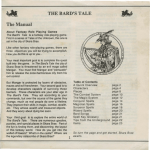
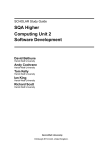
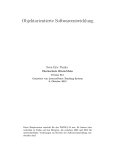

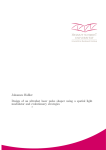

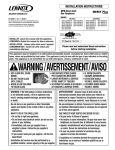
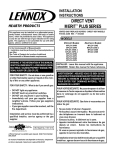

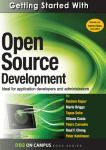
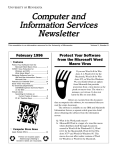

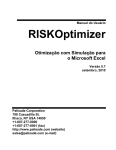
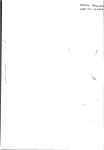
![Imprima este artículo - Poli[Papers]](http://vs1.manualzilla.com/store/data/006296209_1-1b337421890e8df5407f26e081d22ead-150x150.png)